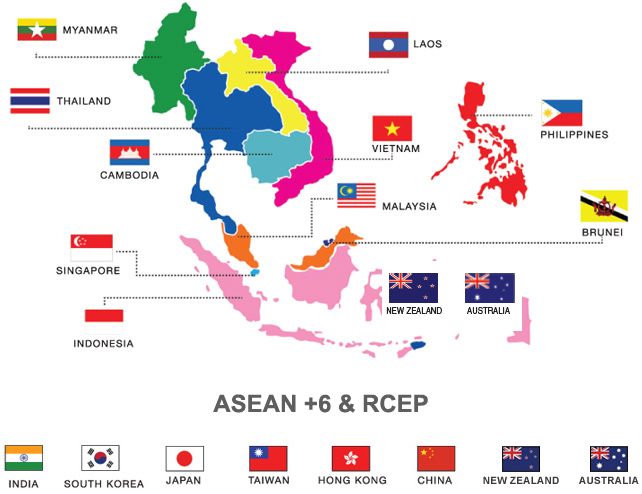Indian government has decided to go forward with major free trade deal called Regional Comprehensive Economic Partnership (RCEP). The deal will allow economic cooperation and free trade between countries in Asia-Pacific regions. The member countries include ten member states of the Association of Southeast Asian Nations (ASEAN) (Brunei, Cambodia, Indonesia, Laos, Malaysia, Myanmar, the Philippines, Singapore, Thailand, Vietnam) and 6 Asia-Pacific countries (Australia, China, India, Japan, South Korea and New Zealand) with whom ASEAN already has free trade agreements. Therefore, this deal does not add something new for ASEAN countries because they already had free trade agreements with all member countries and within their own (ASEAN) member countries. But for countries like China, India, and Japan it will make major changes in their socio-political orientation.
The problem for the country is that it already has trade deficit with 10 of RCEP member countries. Indian businesses worry that they will lose due to new trade deal because companies from RCEP member countries could offer cheaper products which will ultimately hurt their own sales and profits. 63 billion dollar trade deficit with China is major concern for the policymakers in the country, businessmen policymakers also worry that India could be dumping ground for Chinese exports as United States shuts door for them. Steel businesses will be hurt most because they are able to compete with Chinese exports despite anti-dumping duty by the government. RCEP will allow Chinese companies to export duty free steel to India at cheap prices which will ultimately hurt domestic businesses.
India is expected to gain at services front due to robust presence of Indian companies in services sector. India convinced member countries to liberalize their service sector and allow movement of skilled Indian professionals. The policymakers were very much sure that India is going to lose on goods front in short term but on services front there will be opportunity to capture large market. The member countries of RCEP contribute 25% of global GDP, 30% of global trade, 26% of foreign direct investment flows and 45% of the total population. If India is able to capture the large market of RCEP member countries, it will give Indian economy a huge fillip. In the long run, service sector will constitute larger part of Indian economy therefore trade off of goods for services seem a good idea. “We have been emphasizing on the inevitable linkage between services and goods negotiations, because RCEP is not a goods agreement alone, and services must be an integral part of the agreement. The linkage has been finally accepted,” said Commerce minister Suresh Prabhu in an event.
Another important reason behind India going with RCEP is Comprehensive and Progressive Trans-Pacific Partnership (CPTPP). A US excluded version of the Trans-Pacific Partnership (TPP), CPTPP could be a threat to trade relation of India with countries in Asia Pacific because many countries overlap in both agreement. If CPTPP progresses successfully before RCEP then India will be excluded and other CPTPP members will gain at the loss of India. There was some opposition in the government to RCEP deal and some members wanted India’s exit due to fear of India losing to China but commerce minister and some other policymakers decided to go with the free trade deal.
